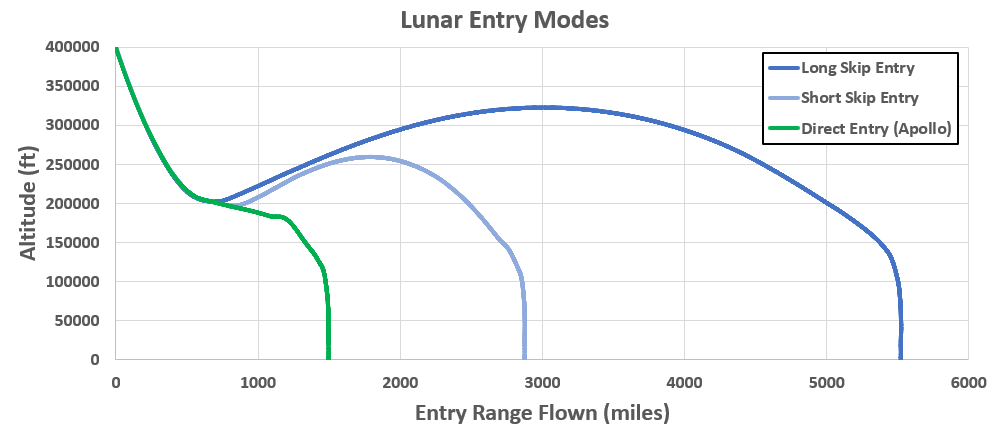When NASA’s Orion spacecraft is nearing its return to Earth after its Artemis I mission to the Moon, it will attempt the first skip entry for a human spacecraft – a maneuver designed to pinpoint its landing spot in the Pacific Ocean.
During this skip entry, Orion will dip into the upper part of Earth’s atmosphere and use that atmosphere, along with the lift of the capsule, to skip back out of the atmosphere, then reenter for final descent under parachutes and splashdown. It’s a little like skipping a rock across the water in a river or lake.
“The skip entry will help Orion land closer to the coast of the United States, where recovery crews will be waiting to bring the spacecraft back to land,” said Chris Madsen, Orion guidance, navigation and control subsystem manager. “When we fly crew in Orion beginning with Artemis II, landing accuracy will really help make sure we can retrieve the crew quickly and reduces the number of resources we will need to have stationed in the Pacific Ocean to assist in recovery.”
During Apollo, the spacecraft entered the Earth’s atmosphere directly and could then travel up to 1,725 miles (1,500 nautical miles) beyond that location before splashing down. This limited range required U.S. Navy ships to be stationed in multiple, remote ocean locations. By using a skip entry, Orion can fly up to 5,524 miles (4,800 nautical miles) beyond the point of entry, allowing the spacecraft to touch down with more precision. The skip entry ultimately enables the spacecraft to accurately and consistently land at the same landing site regardless of when and where it comes back from the Moon.
“We extend the range by skipping back up out of the atmosphere where there is little to no drag on the capsule. With little or no drag, we extend the range we fly,” said Madsen. “We use our capsule lift to target how high we skip, and thus how far we skip.”
Although the concept of the skip entry has been around since the Apollo era, it wasn’t used because Apollo lacked the necessary navigational technology, computing power, and accuracy.
“We took a lot of that Apollo knowledge and put it into the Orion design with the goal of making a more reliable and safer vehicle at lower cost,” said Madsen. “These are some of the things we’re doing that are different and provide more capability than Apollo.”
The skip entry also will allow astronauts to experience lower g-forces during Earth entry from Moon missions. Instead of a single event of high acceleration, there will be two events of a lower acceleration of about four g’s each. The skip entry will reduce the acceleration load for the astronauts so they have a safer, smoother ride.
Splitting up the acceleration events also splits up the heating, no small matter for a spacecraft that will endure approximately 5,000 degrees Fahrenheit upon reentry, half as hot as the surface of the Sun. The heat the spacecraft will experience upon reentry will be split over two events causing a lower heat rate at both occurrences and ultimately making it a safer ride for the astronauts.
During Artemis missions, Orion will splashdown approximately 50 miles (43 nautical miles) off the coast of San Diego, California, where rescue teams are close and can quickly recover the spacecraft. This quick recovery will make it safer for the astronauts and be more cost efficient than Apollo by eliminating the need for the Navy to deploy ships widely across the target ocean.
As an essential part of NASA’s Artemis program, the Orion spacecraft will fly on NASA’s first integrated test of its deep space exploration systems during Artemis I. The Space Launch System rocket will launch an uncrewed Orion on a mission to travel 40,000 miles beyond the Moon and then return to Earth.
To learn more about Artemis I and Orion, visit: https://www.nasa.gov/specials/artemis/
Reiley Doty, Johnson Space Center























